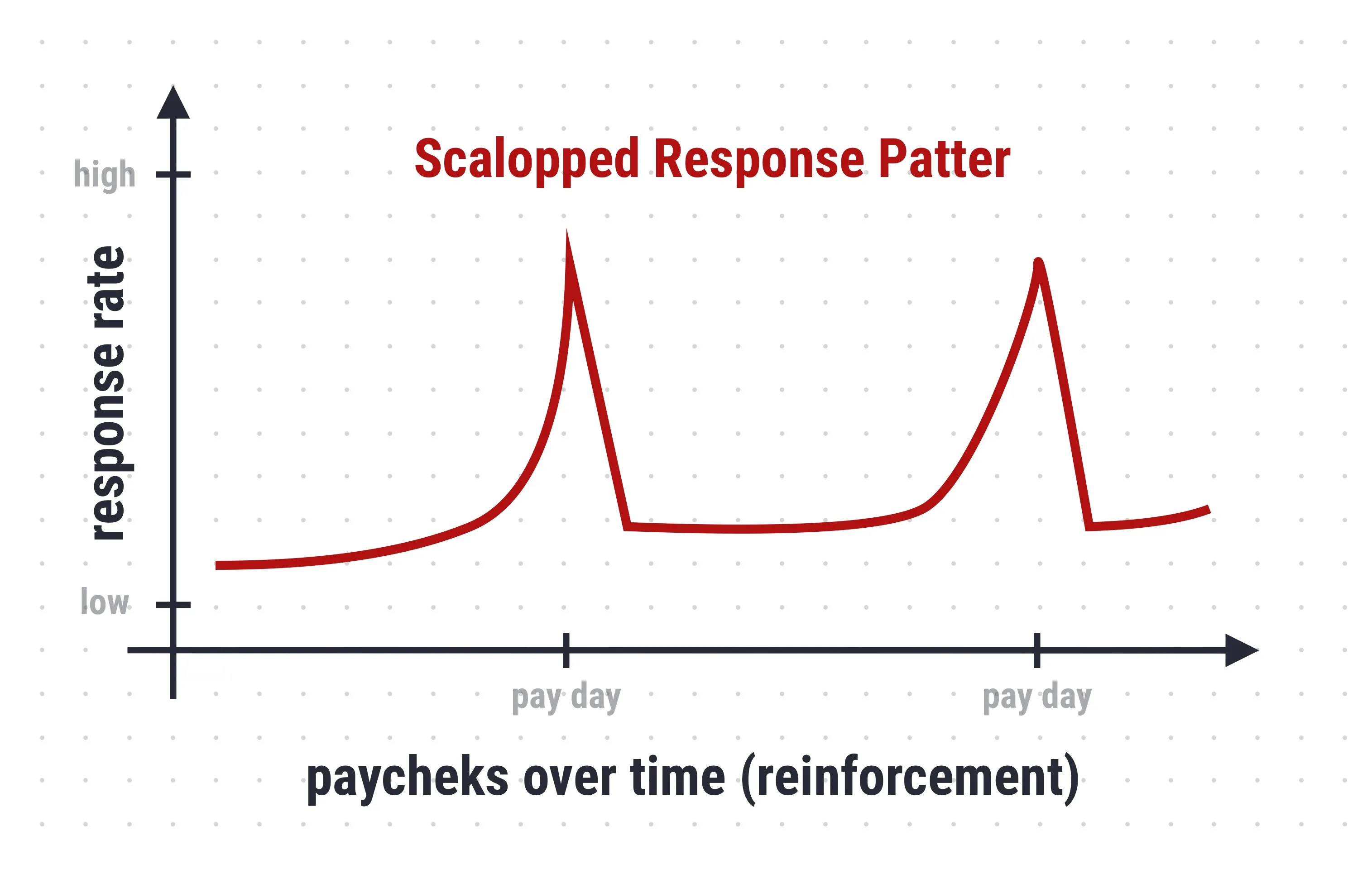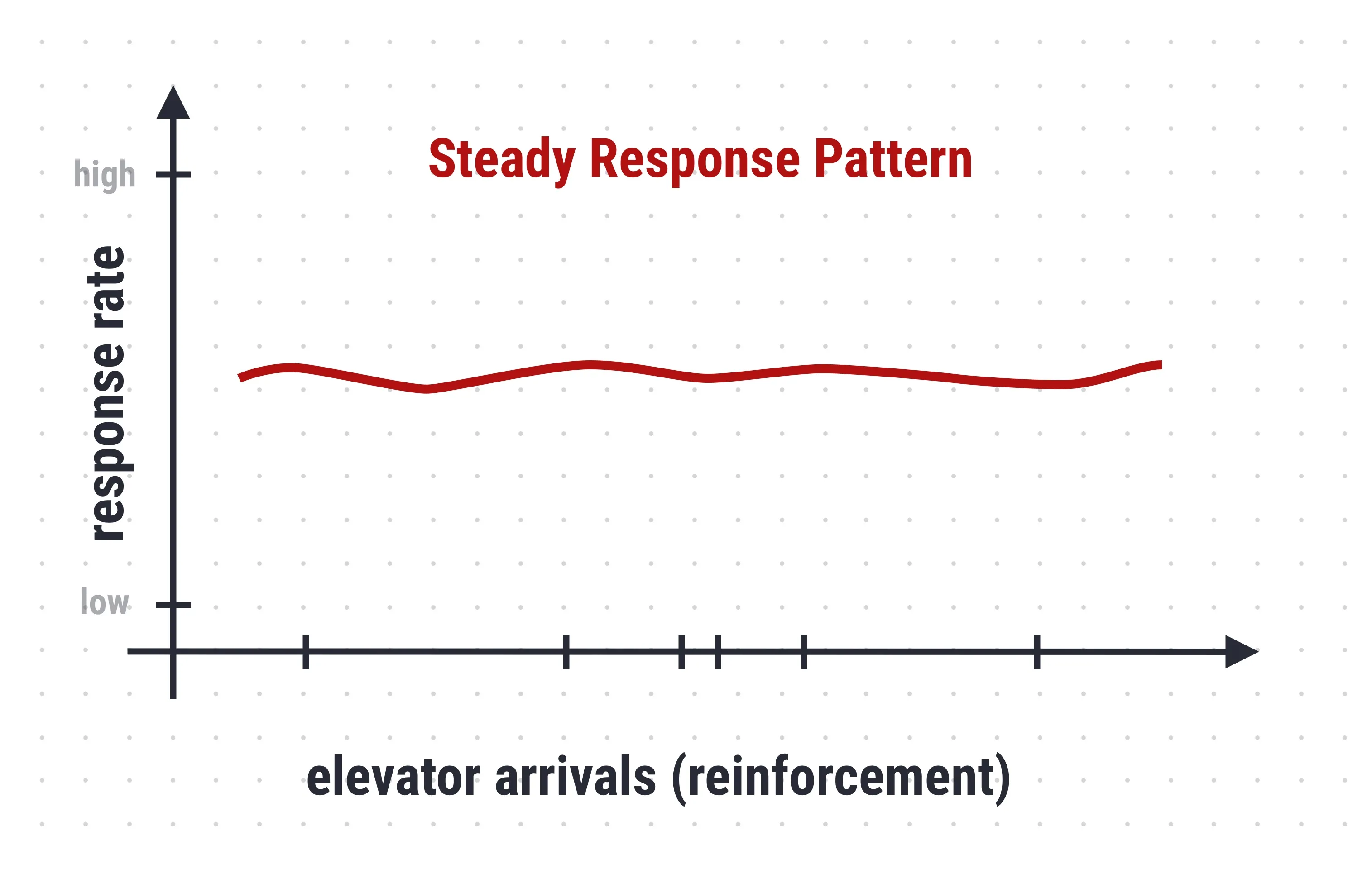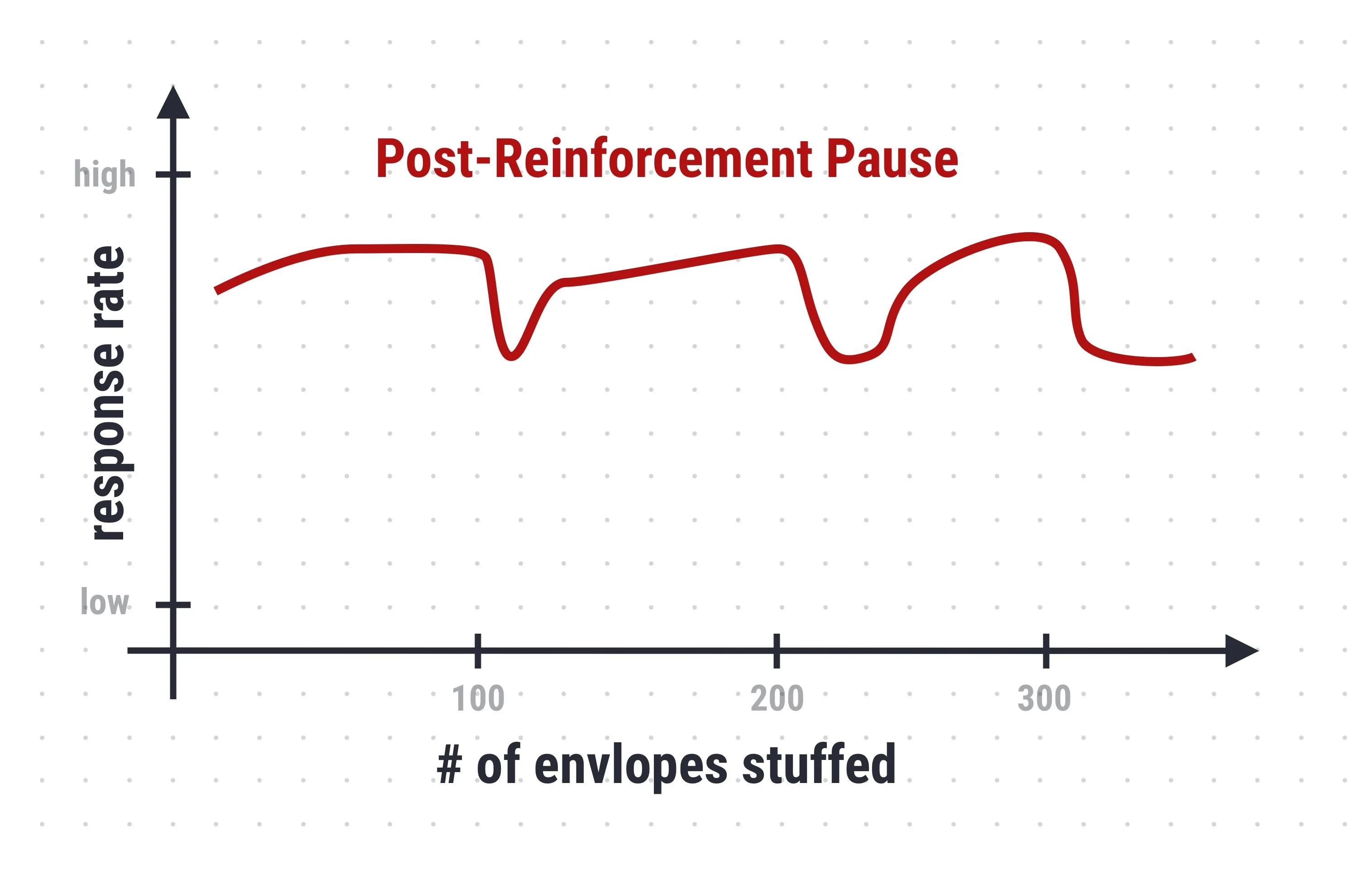Definition: A schedule of reinforcement is a series of reinforcers or punishments utilized to control behaviour patterns in operant conditioning. It’s a set of rules that determine how often a player is reinforced for a particular behaviour.
A reinforcer is an outcome or result, generally referring to a reward like an experience point, winning a level, or a bigger gun;
Operant conditioning - a response that is followed by reinforcing stimulus is more likely to occur again;
Particular behaviour pattern - (or response) pushing buttons 100 times, killing a monster, visiting an area of the game board.
In general, it’s the same gameplay loop but with a nice addition of interval and reinforcement.
There are four patterns / partial schedules:
- fixed interval
- variable interval
- fixed ratio
- variable ratio.

Fixed interval schedule
Interval schedules involve reinforcing a behaviour after some time has passed. In a fixed interval schedule, the interval of time is always the same.
Example in video games: Waiting for monsters to re-spawn in a game area where re-spawning occurs at fixed intervals.
Example in natural environments: Day job that delivers paycheck every 2 weeks regardless of performance at the job.

Variable interval schedule
Interval schedules involve reinforcing a behavior after a variable interval of time has passed. In a variable interval schedule, the interval of time is not always the same but centres around some average length of time.
Example in video games: A monster holding epic treasure may appear at random.
Example in natural environments: Checking emails. Calling elevator. As well as fishing, if you just cast your hook and wait.

Fixed ratio schedule
Ratio schedules involve reinforcement after a certain number of responses have been emitted. The fixed-ratio schedule involves using a constant number of responses.
Example in video games: Character “level-up” after gaining a constant amount of experience points.
Example in natural environments: Jobs that pay on units delivered.

Variable ratio schedule
A reinforcer is given after a specified number of correct responses. This schedule is used to increase and maintain a steady rate of specific responses. This schedule is best for maintaining behaviour.
Example in video games: Loot “grinding” in RPG.
Example in natural environments: Slot machines. Players have no way of knowing how many times they have to play before they will win. All they know is that eventually, a play will win.
These observations were made during an experiment in an operant conditioning chamber also the so-called “Skinner Box” which is a laboratory apparatus used to study animal behaviour. This operant conditioning chamber by B. F. Skinner.

